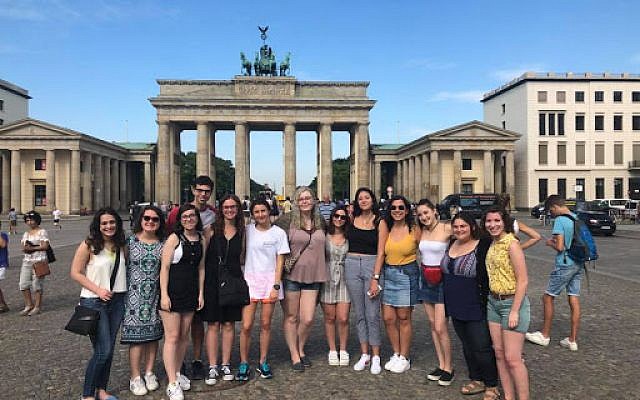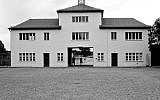Similarities in US and German Holocaust Education
Young adults traveled to Germany with American Jewish Committee program, Germany Close Up.

Do you remember learning about the European Recovery Program, more commonly known as the Marshall Plan?
This American aid initiative began in 1948 to help Europe rebuild after the second World War. The Marshall Plan consisted mostly of grants rather than loans, so the countries benefiting would not be left in debt to the United States. However, Germany paid back the money it received as a way to improve its negative reputation left by the war. By 1971, Germany had repaid all its Marshall Plan money. So how and why did the Marshall Plan help fund my educational trip to Germany this summer?
I traveled to Germany through a program called Germany Close Up, funded by the European Recovery Program Special Fund of the German Federal Ministry for Economic Affairs and Energy. Germany Close Up gives young American Jews the opportunity to experience Germany through a Jewish lens. Every year, American Jewish Committee works alongside Germany Close Up to organize a trip to Berlin for AJC Goldman Fellows like me and other young Jewish adults. The focus of the trip is German Jewish history.

Over the course of eight days, we immersed ourselves in the heritage of German Jewry through tours, museums, memorials, a visit to the former Sachsenhausen concentration camp, Shabbat services, and conversations with the staff at the AJC office in Berlin. The most enriching parts of the program were discussions with a variety of Germans, including members of the German Jewish community, German youth, a former Bundestag representative, and a Federal Foreign Office diplomat. These discussions helped us understand not only the history of the German-Jewish experience, but the status of the Jewish community in Germany today.
Of all the topics we discussed, I was most interested in how Germany handles Holocaust education. In our conversation with Holocaust educators, we were shocked to hear that many young Germans feel overly saturated with Holocaust history and are therefore paying less attention to that part of their education.
But Germany is not the only country having this problem; a recent study by the Conference on Jewish Material Claims Against Germany provided alarming statistics about severely insufficient Holocaust education in the United States.
The study found that 11 percent of American adults have not heard of the Holocaust. And those who have heard of it know little about it. Nearly half of all Americans were unable to name a single concentration camp or ghetto and, more shockingly, more than 30 percent of Americans believed that the death toll was under 2 million.
What can we learn from this study and my experience in Germany? For starters, it’s a great step that the Marshall Plan continues to fund educational programs for American Jews visiting Germany. But we need to pay attention to how we address the gaps of Holocaust education in both the German and American education systems. If younger generations are improperly or insufficiently educated about this deplorable era, history could repeat itself. We need to discover methods to teach about the Holocaust so we will be able to say with certainty: Never again!



comments